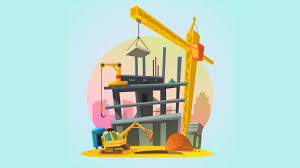
Top Framing Materials for Durability & Cost Efficiency in 2025
Top Framing Materials for Durability & Cost Efficiency in 2025
Choosing the right framing materials is one of the most critical decisions in construction. The materials you select impact your project’s strength, longevity, energy efficiency, and overall cost. With advancements in building technology and sustainability trends, 2025 brings several excellent options for both residential and commercial framing.
Here’s a breakdown of the best framing materials available today, weighing durability, cost, and suitability for different projects.
1. Dimensional Lumber (Traditional Wood Framing)

Best for: Residential homes, small commercial projects, and DIY-friendly builds.
Pros:
-
Cost-effective – One of the most affordable framing options.
-
Easily available – Widely stocked at home centers and lumber yards.
-
Simple to work with – Lightweight and easy to cut/modify on-site.
Cons:
-
Prone to warping & shrinking – Can lead to cracks or structural shifts over time.
-
Vulnerable to pests & moisture – Requires treatment for termite and rot resistance.
-
Not as strong as engineered alternatives – May need additional supports for larger spans.
Best Uses:
-
Budget-friendly home builds
-
Interior wall framing
-
Low-rise residential projects
2. Engineered Wood Products (LVL, LSL, PSL, I-Joists)
Best for: High-load structures, long spans, and eco-conscious builds.
Pros:
-
Stronger than traditional lumber – Handles heavier loads with less deflection.
-
More stable – Resists warping, twisting, and shrinking.
-
Sustainable options – Many products use fast-growing or recycled wood fibers.
Cons:
-
Higher upfront cost – More expensive than dimensional lumber.
-
Requires precise installation – Needs specialized cutting and fastening techniques.
Types & Best Uses:
-
LVL (Laminated Veneer Lumber) – Beams, headers, and floor joists.
-
LSL (Laminated Strand Lumber) – Wall framing and rim boards.
-
PSL (Parallel Strand Lumber) – Columns and heavy load-bearing beams.
-
I-Joists – Floor and roof systems for open-concept designs.
3. Light-Gauge Steel Framing
Best for: Commercial buildings, modern homes, and fire-resistant structures.
Pros:
-
Non-combustible – Meets strict fire codes for multi-family and commercial builds.
-
Termite & rot-proof – No risk of pest damage or moisture warping.
-
Lightweight yet strong – Ideal for high-wind and seismic zones.
Cons:
-
Higher material cost – More expensive than wood framing.
-
Thermal bridging issues – Requires additional insulation for energy efficiency.
-
Specialized labor needed – Not all carpenters are trained in steel framing.
Best Uses:
-
Multi-story buildings
-
Fire-resistant construction
-
Areas prone to termites or humidity
4. Structural Insulated Panels (SIPs)
Best for: Energy-efficient homes, prefab construction, and fast builds.
Pros:
-
Superior insulation – Reduces energy costs by minimizing thermal leaks.
-
Faster installation – Prefabricated panels speed up framing time.
-
Strong & lightweight – Handles heavy loads with fewer supports.
Cons:
-
Higher initial cost – More expensive than stick framing.
-
Limited design flexibility – Modifications on-site can be difficult.
Best Uses:
-
Net-zero energy homes
-
Prefab and modular construction
-
Cold climates requiring high insulation
5. Concrete & Insulated Concrete Forms (ICFs)
Best for: Extreme durability, soundproofing, and disaster-resistant builds.
Pros:
-
Extremely durable – Resists fire, wind, and seismic activity.
-
Energy-efficient – Excellent thermal mass for temperature regulation.
-
Soundproof – Ideal for urban or multi-family housing.
Cons:
-
Expensive & labor-intensive – Requires skilled workers and longer setup.
-
Heavy & difficult to modify – Not ideal for quick renovations.
Best Uses:
-
Storm & hurricane-prone areas
-
High-end custom homes
-
Commercial buildings needing extra durability
Which Framing Material is Right for You?
| Material | Best For | Cost | Durability | Ease of Installation |
|---|---|---|---|---|
| Dimensional Lumber | Budget builds, DIY | $ | Moderate | Easy |
| Engineered Wood | High-load, long spans | $$ | High | Moderate |
| Steel Framing | Fire & pest resistance | $$$ | Very High | Requires expertise |
| SIPs | Energy efficiency | $$$ | High | Fast (prefab) |
| ICFs | Disaster-proof builds | $$$$ | Extreme | Complex |
